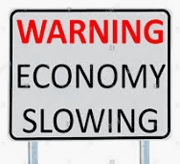| |
|
| |
|
 |
Supply
Chain by the Numbers |
| |
|
| |
- Aug. 4, 2022
|
| |
|
| |
|
| |
|
| |
Maersk Projects Record Profits with Sky High Rates; Brick and Mortar Comeback; US PMI Shows Mixed State of Economy; Consumers Flock to Dollar Stores, Private Label |
| |
|
| |
| |
| |
| |
$ 31 Billion |
|
That is the record-setting forecast for 2022 profits from AP Moller-Maersk, parent of container shipping giant Maersk Line, up from previously projection of $24 billion. That even Maersk is seeing container volumes declining in a weakening global economy, with the company now saying it expects container volumes to come in between -1% and 1% for the full year. Volumes in Europe are especially seeing significant declines. Then why the sky profits? The company said trade congestion had lifted global freight prices, creating “exceptional market conditions” for the shipping business. Maersk said that while freight rates had recently softened slightly, they remain at historic highs, and that on-going congestion issues pointed to continued fluctuation in prices. |
|
|
| |
| |
|
|
 |
| That was the level of the US Purchasing Managers Index (PMI) for July, released this week by the Institute for Supply Management (ISM). That was down again from a score of 53.0 in June, but still above the key 50 level that separates US manufacturing expansion from contraction. Despite falling for the second straight month, the PMI reflects the uncertain state of the US economy, which is sending mixed signals. The PMI is showing a slowing manufacturing environment - but one still in positive territory. The July figure also indicates expansion in the US overall economy for the 26th month in a row after the last contractions in April and May 2020. Other measures in the ISM report were mixed. Most worrisome: the important New Orders Index came in at just 48.0, the second straight month showing contraction, with scores under 50, in not good news for future US manufacturing activity. |
|
|
|
| |
| |
71% |
|
That was the huge average level of increase of spending by consumers at dollar stores and other deep discount chains from last October through June, as shoppers look for less costly products in the face of soaring prices. Meanwhile, spending on the same items at traditional grocery stores fell 5%, a significant decline. That according to data last week from research firm In-Market. Along the same lines, private label grocery brands gained 1 percentage in market share by revenue in the four weeks ending July 10, according to retail data firm IRI. In the consumer packaged goods world, a 1% share gain is substantial. Grocers are lately decreasing prices for private label products versus traditional branded products, helping along with inflation to make the private label option more attractive. |
| |
| |
| |
| |
| |
|
|
|
| |
 |
 |
| |
 |
![]() |
 |
|
| |
 |
Feedback |
|
|
|
![]()
|
No Feedback on this article yet.
|
|
![]() |
|
|
|
![]() |
 |
![]() |
 |
|
| |